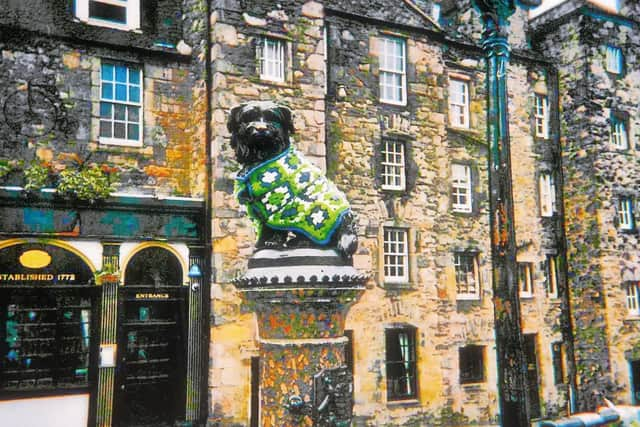Urban furniture can create happy cities that are good for our mental health – Negar Ebrahimi
This article contains affiliate links. We may earn a small commission on items purchased through this article, but that does not affect our editorial judgement.
Have you ever taken a camera on a walk in a city, just strolled around and photographed anything meaningful? This is what I asked the participants to do in a study I organised while conducting PhD research at the University of Edinburgh on spatial happiness. The result of this walking tour was Edinburgh Street Portraits, a reflective photography project capturing the life of the city’s streets and informal observations of its residents, revealing their everyday urban experiences and emotional attachments to their home.
Urban photography provides, in essence, a representation of the city and people’s experience of it, and regardless of how selectively they are framed, the images can provide insightful ‘visual traces’ of actual urban spaces. For example, one picture captured the Greyfriars Bobby statue, which had been “given a blanket to keep him warm!”, as the photographer noted. They were moved to take the photo because of the blanket, and warm feelings towards representations of belonging and familiar urban spots that communicate a sense of social connection could be detected from their comment.
Advertisement
Hide AdAdvertisement
Hide AdThe person who put the blanket on the statue subtly sent a message to other passersby along the lines of “we might not know each other, but we share this public space and this statue, and we are connected through belonging here”. Such photos highlight the internalised and complex processes that influence people’s perception and imagination of place, the processes that are beyond the individual, and are interwoven with the fabric of community, place, and time.
Notably, the project’s photographs reveal an interest in urban furniture, with more than 70 per cent of the images containing benches, flower boxes, streetlights, community notice boards and the like. Urban furniture might seem conventional, but its dominant presence in the collected photos cannot be ignored. Urban furniture is a matter of convenience and comfort that is also able to increase people’s happiness and encourage positive spatial experiences.
The lack of sufficient urban furniture can cause at least uneasiness. For instance, the scarcity of serviceable trash bins during the 2022 bin strike that began in Edinburgh saw piles of garbage accumulate on street corners, resulting in a health warning being issued. Streetlights can create a festive mood, as demonstrated by Christmas street decorations, while an out-of-order light is often used in horror movies to create a sense of peril. Likewise, oppressive urban furniture can create a feeling of being under surveillance or of civil liberties being limited.
After a long walk, a bench can offer a refuge for tired feet while, conversely, the lack of comfortable seating arrangements might deprive friends of a chance to sit together, chat and catch up. One of the study’s participants described the combination of a bench and a garden as “an invitation” to chat, while another captured a picnic table in a garden for “community meals and conversations”.
In short, urban furniture that chimes well with the people’s broader needs can provide the details of a setting that we appreciate, while the opposite can create a place that people despise, highlighting the role of community and, crucially, the role of shared public areas and street furniture in a fulfilling urban experience and people’s quality of life. The need for local funding for good urban furniture is more and more part of public discourse, with community members becoming increasingly aware of the consequences of austerity, the cost-of-living crisis and funding cuts on their local spaces.


A comfortable and neat urban setting boosts a sense of safety through its orderly arrangements. This could be linked to the broken window theory developed by social scientists George Kelling and James Wilson, which has influenced the policing of several cities around the world including New York since the 1990s. Although the theory has proved controversial in practice, its approach is plausible, suggesting that visible cues of disorder like a broken window can lead to more serious situational crime and civil troubles.
This theory highlights the messages that urban spaces deliver – if an alley with a broken streetlight is too dark, we might prefer to choose another path or a bench could lead to a chat with a friend. Urban furniture can be the thread that reflects and reinforces the patterns of movement in happy cities, with benefits for mental health.
This is demonstrated by the Breathing Space Bench project by North Lanarkshire Council and Breathing Space Scotland, with the ambition to create welcoming spaces for people to connect and communicate. According to the former depute leader of North Lanarkshire Council, Paul Kelly, “sometimes we all need a bit of time when things seem overwhelming. Sitting down to gather your thoughts or having a chat with someone about your worries or concerns can make a huge difference.” Breathing Space, a free and confidential phone service for people across Scotland, offers specialist support to anyone feeling low, anxious or overwhelmed.
Advertisement
Hide AdAdvertisement
Hide AdWhile street furniture might appear to be in the background of the urban stage, in fact it is at the forefront of how the place is experienced, playing a significant role in animating urban life and spatial happiness.
Negar Ebrahimi is a PhD researcher, passionate about promoting people’s happiness through architecture and urban design. See more on her work via www.linkedin.com/in/negar-ebrahimi
Comments
Want to join the conversation? Please or to comment on this article.